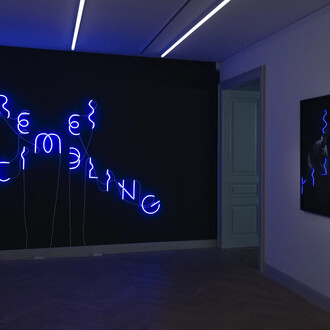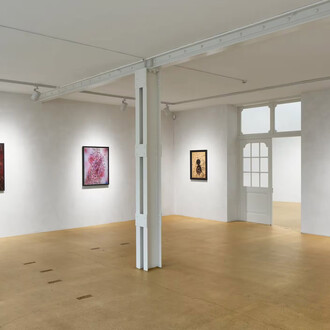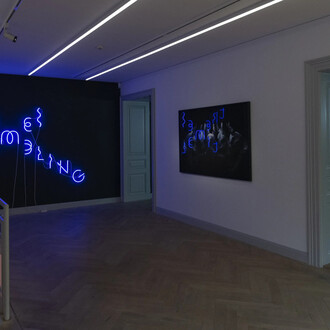Ribordy Contemporary is very pleased to announce a three persons exhibition of new works by Ron Gorchov, Erik Lindman and Nathlie Provosty which will open on January 18 and run through March 16, 2018. The three artists share a common investigation and interest in colors, scale and surface of distinctive forms. Starting in 1966, Gorchov initiated his search of ‘a more intentional form that would create a new kind of visual space’, a sort of hybrid between painting and sculpture. His distinctive and assertive stretchers resembling saddles or shields were then created as an alternative to formalism of the time, evidenced in the dominance of minimalist sculpture. The stretchers offered a foil to the novel images, as yet seldom seen in contemporary painting. Over the four past decades, the vast majority of Gorchov’s paintings contains identical elements – two biomorphic shapes against a monochromatic background on saddle-like stretchers, at once concave and convex – with variations running from nuanced inflections to stark contrasts.
Nathlie Provosty created for the show two paintings of intimate scale and one large corner work, each of them sharing the same interest in color, surface, forms, intimacy of material and attention to the edges that define her painting. Early Language, 2017 is comprised of two canvas of identical size, installed in a corner of the exhibition’s space. Each panel mirroring each other with the painted shape of the first panel being inverted in the second one. The upper and inner edges of each painting are framed/delimited with black sections on which the form overflows.
The juxtaposition of the glossy shape and the matte background both reflect and capture light. The outer edge of each panel is beveled and thus creates a sensation that the painting physically unfolds in space. The two other works, Ply II and Ply III share the same interest in mirroring composition, bisected rectangles, on which the elements interact and unfold. Provosty’s paintings are at the same time very precise and highly sensual.
Erik Lindman shares the same interest in paint as a medium and the surface of the painted object as Nathlie Provosty and Ron Gorchov. He is best known for his use of found materials or dismantled parts of some of his previous work that he combines and incorporates on canvas or boards.
Lindman presents three new paintings that further explore his research with anonymous found surfaces. Over the past three years, he has been increasingly interested in paint itself as a material which has led to an evolution of his engagement with found materials. ‘The absorbency, luminosity and superficial variation of the found surfaces inform how paint, when applied over and around these found surfaces, is experienced. There is a subtly startling way in which light moves through oil paint and reflects off of the found metallic surfaces and the painted grounds in which the metal surfaces are embedded. The paint and the surfaces fully compliment each other, visually and materially. (Elephant, ‘5 questions to Erik Lindman’ by Emily Steer, September 20, 2016).
At first sight, the composition of ‘Untitled (Grey panel with canvas)’, 2017 is straightforward: a rectangle on a grey background. Upon closer inspection, the viewer discovers the surface of the painting: the shape is comprised of a rectangle of painted canvas, that has been applied to a wooden panel. By partially painting over the central shape with the same grey hue as the support of the work, background and foreground merge; each constituent part of the composition reveals and reinforces the whole.














